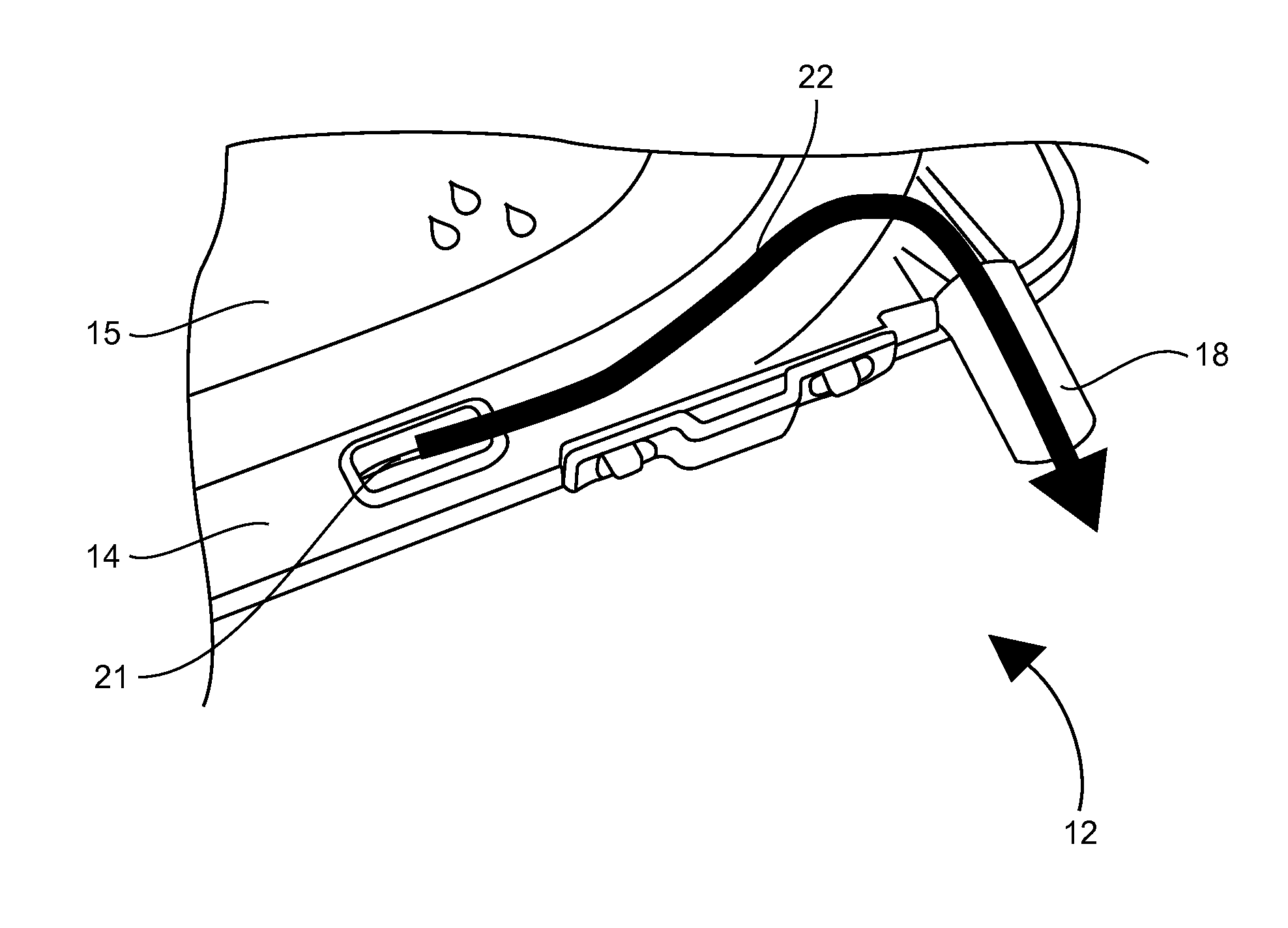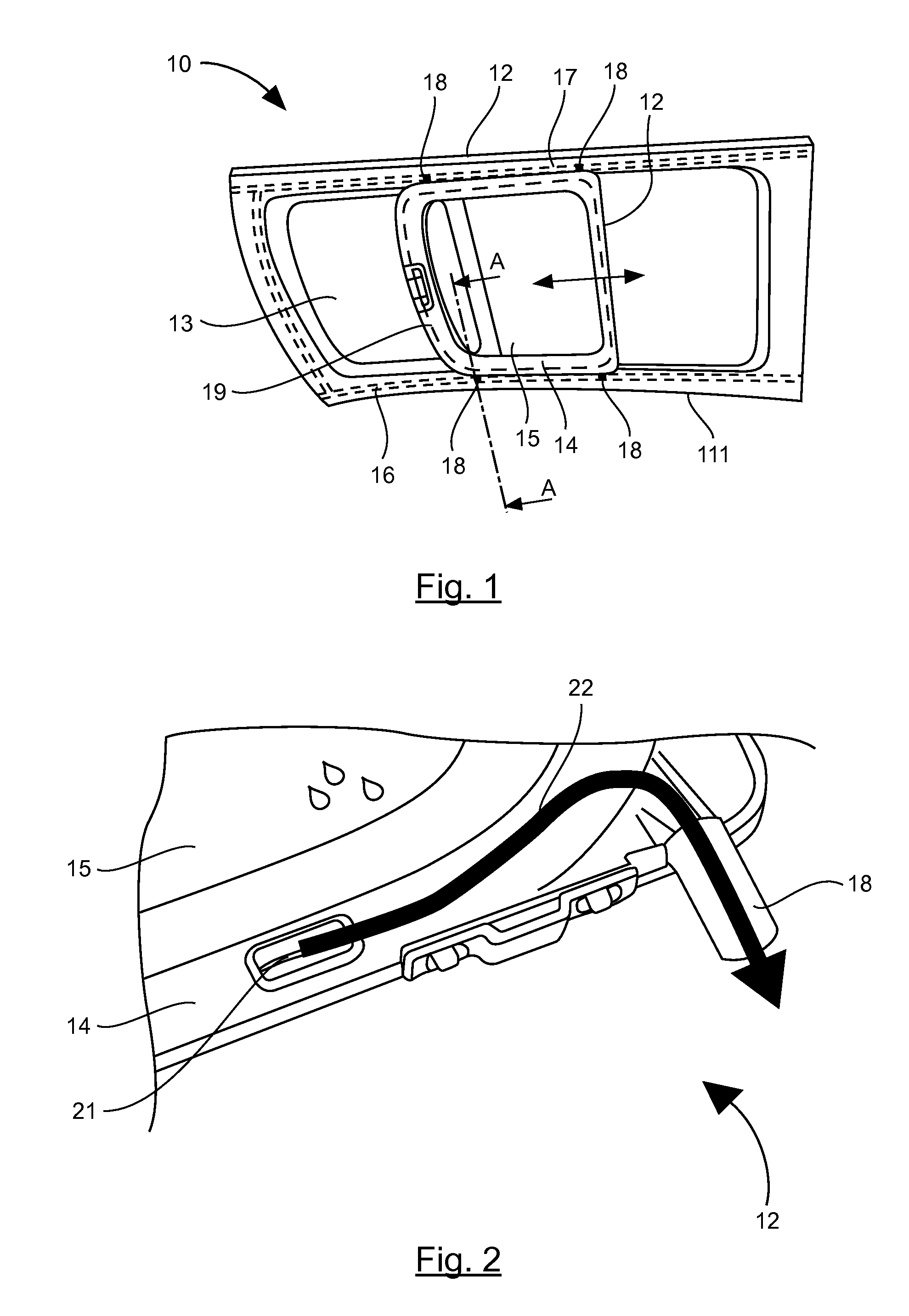Device for closing off an opening prepared in the roof of a vehicle, provided with a sealing barrier and a drain for draining water towards the exterior
a technology for openings and roofs, which is applied in the direction of roofs, mechanical devices, transportation and packaging, etc., can solve the problems of the glazed surface, etc., and affecting the sealing effect of the roof. , the effect of reducing the sealing
- Summary
- Abstract
- Description
- Claims
- Application Information
AI Technical Summary
Benefits of technology
Problems solved by technology
Method used
Image
Examples
Embodiment Construction
1. Reminder of the Principle of an Embodiment of the Invention
[0062]As referred to here above, the general principle of an embodiment of the invention therefore relies on the implementation of a draining of water that is deposited on the roof, on the external surface of the movable panel or on that of the fixed part, towards the exterior of the vehicle, as soon as the movable panel is in any opening position and hence as soon as the aperture is released, and solely in this case.
[0063]In at least one embodiment of the invention, this novel approach makes it possible especially to form an efficient sealing barrier for the aperture formed in the fixed part and therefore for the car interior space when the movable panel is closed.
2. Example of an Embodiment of the Invention
[0064]Here below, we consider a roof of a vehicle formed by a closing-off device according to an embodiment of the invention which is attached to the body of the roof of the vehicle.
[0065]FIG. 1 is an illustration, in...
PUM
 Login to View More
Login to View More Abstract
Description
Claims
Application Information
 Login to View More
Login to View More - R&D
- Intellectual Property
- Life Sciences
- Materials
- Tech Scout
- Unparalleled Data Quality
- Higher Quality Content
- 60% Fewer Hallucinations
Browse by: Latest US Patents, China's latest patents, Technical Efficacy Thesaurus, Application Domain, Technology Topic, Popular Technical Reports.
© 2025 PatSnap. All rights reserved.Legal|Privacy policy|Modern Slavery Act Transparency Statement|Sitemap|About US| Contact US: help@patsnap.com



